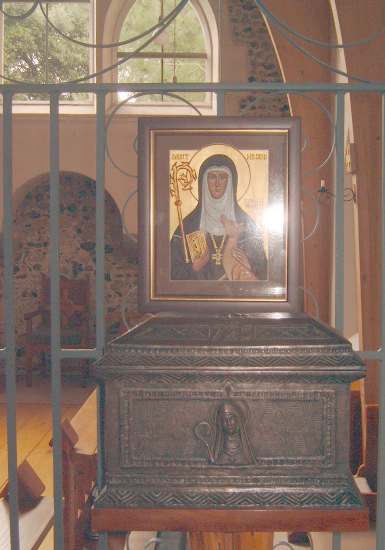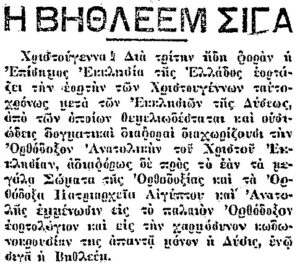St. Mildred Abbess of Minster-in-Thanet c. 660-c.725 AD

SAINT MILDRED – St. Mildred was the daughter of King Merewald of Magonset and his wife, St. Ermenburga (alias Aebbe of Minster-in-Thanet); and therefore sister of Saints Milburga and Milgitha. At an early age, her mother sent her to be educated at Chelles in France, where many English ladies were trained to a saintly life.
A young nobleman, related to the Abbess of Chelles, entreated her to arrange that he might marry this English princess. The abbess tried to persuade her, but Mildred said her mother had sent her there to be taught, not to be married, and all the abbess’s advice, threats and blows failed to persuade her to accept the alliance offered to her. At last the abbess shut her up in an oven in which she had made a great fire; but after three hours, when she expected to find not only her flesh but her very bones burnt to ashes, the young saint came out unhurt and radiant with joy and beauty.
The faithful, hearing of the miracle, venerated Mildred as a saint; but the abbess, more infuriated than ever, threw her on the ground, beat, kicked and scratched her and tore out a handful of her hair. Mildred found means to send her mother a letter, enclosing some of her hair, torn from her head by the violence of the abbess; and Queen Ermenburga soon sent ships to fetch her daughter.
The abbess, fearing that her evil deeds should be made known, would, on no account, give permission for her departure. Mildred, however, fled by night; but, having in her haste forgotten some ecclesiastical vestments and a nail of the cross of Christ which she valued extremely, she managed to return for them and brought them safely away.
Upon her arrival back in England, she landed at Ebbsfleet where she found a great square stone, miraculously prepared for her to step on from the ship. The stone received, and retained, the mark of her foot and was afterwards removed to the Abbey of Minster-in-Thanet (below) and kept there in memory of her. Many diseases are said to have been cured for centuries after, by water containing a little dust from this stone. It was often removed from its first situation, until an oratory was built for it.

With her mother’s consent, Mildred joined her at her foundation of Minster-in-Thanet. She was given the veil by Theodore, Archbishop of Canterbury, at the same time as seventy other nuns. On St. Ermenburga’s death, Mildred succeeded her as Abbess of the community, to whom she set a holy example and by whom she was much beloved. An old story is recorded that one night, while she was praying in the church of her monastery, the devil blew out her candle, but an angel drove him away and re-lit it for her.
Mildred died of a lingering and painful complaint, around AD 732.

The reliquary of St. Mildred’s grace-bearing relics at Thanet
She was succeeded by St. Edburga of Minster-in-Thanet. During the latter’s rule, it apparently happened that the bell-ringer fell asleep before the altar. The departed Mildred awoke him with a box on the ear, exclaiming, “This is the oratory, not the dormitory!”
She continued to be an extremely popular saint, eclipsing the fame of St. Augustine, in the immediate neighborhood of her monastery, where the place that used to be proudly pointed out as that of his landing came to be better known as “St Mildred’s Rock.”






